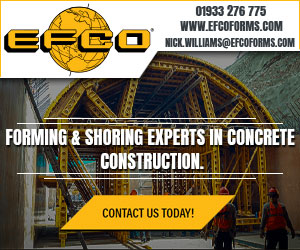WHY TIMBER FRAME?
Tribus Homes
WHY TIMBER FRAME?
Every builder is faced with having to decide which method they will employ to construct their home. Although some new builds utilise the ancient art of cob, or the more recent straw bale techniques, the vast majority of new builds are built using masonry or timber frame. There are a number of advantages in using timber frame.

CONSTRUCTION TIME
By choosing to build using a timber frame the client will, on average, cut the total construction time by 30%. The timber frame wall panels will be manufactured off site during the ground works process, so as soon as they are completed the timber frame can be delivered to site. The time taken to erect the frame will clearly vary depending upon the size, and more importantly, the complexity of the design, but on average a 2000 square foot house will be in the dry after three weeks. For a self-builder reducing the build time may reduce rental and storage costs, financing costs, or the time spent in a caravan! For a developer the quicker the build time the sooner there will be a return on the investment.
CONTROL OF THE BUILD PROGRAM
Building using a timber frame gives the client far greater control over the build program, and is therefore another component in reducing the construction time. When signing the contract the client will be told when the frame will be delivered to site, and when the frame erection will be completed. This allows the client to book follow up trades in the knowledge that the building will be at a stage to allow work to start. As soon as the frame erectors have left the site the roofer, plumber and electrician can all start. The key to an efficient build is to have a seamless transition between the different trades required to complete the build, choosing to build in timber frame makes this easier to achieve.
CONTROL OF COSTS
Controlling the budget is crucial to a successful build. Timber frame construction helps the client to control the budget. Not only is the client fixing the cost of a sizeable proportion of the total build budget, but also the scope for unforeseen extras is eliminated, as are the additional costs caused by delays due to adverse weather conditions.
ENVIRONMENTAL ISSUES
For the client who is concerned about the impact upon the environment caused by his/her building project, timber frame construction should be the preferred method of construction. The timber used in the construction of the wall panels comes from renewable sources, the ‘I’ beams in the joist platform are constructed using waste material from the lumber industry, the Panelvent or OSB external sheathing board is made from waste raw materials, whilst the Fermacell internal wall boards are manufactured using recycled paper and recycled gypsum. Not only are the materials used from renewable or recycled/waste products, the manufacture of the products used in a timber frame consumes about 30% less energy than those employed in a masonry build.
THERMAL EFFICIENCY
The environmental impact of a building is not just restricted to the choice of building materials, perhaps of greater importance is the energy that the building will consume over its’ lifespan. Timber frame construction allows homes to be highly insulated in a cost effective manner. In a masonry construction the external walls are insulated in the cavity between the inner and outer block work walls, whilst in a timber frame it is the wall panels themselves that are insulated. Therefore the thicker the wall the more insulation can be used. Having a highly insulated home is probably the single most important factor in reducing the impact on the environment of your new home, clearly the greater the insulation the less energy will be used in heating the building. At a time of seemingly spiralling energy costs, spending money upfront on insulation will also be cost effective; of all the environmentally friendly options it has the shortest pay back time. Timber frame also allows the homebuilder to opt for environmentally friendly insulation products, such as Warmcell [recycled paper] or sheep’s wool, products which are not designed for use as cavity insulation. Accuracy of Build, Flexibility of Design and Maintenance. Timber frame buildings are essentially a large jigsaw puzzle, though hopefully the solution to the puzzle is known! Being factory produced all the components are designed to fit together exactly. This accuracy of build leads to greater build quality. Timber frame offers flexibility of design, whilst also allowing adaptations to be easily carried out in the future. Being a relatively lightweight, but robust, method of construction it is also ideally suited to being used in difficult site conditions. Timber frame construction is also a dry means of construction. This means that there are not long drying out periods, and the finished homes do not suffer from settlement and drying out cracks which are the cause of so many builder call backs in masonry houses.
SOUND TRANSFER
There is a common misconception that timber framed houses have poor sound insulation. Poor sound insulation is however not an inherent problem, just as it is not with masonry homes. If there is poor sound performance between masonry walls it is likely to be due to poor workmanship in not ensuring that the joints between the blocks are fully filled. If there is poor sound insulation in a timber framed house it is likely to be due to the choice of materials. Tribus Homes are acutely aware that their clients do not wish to live in homes with poor sound insulation, and therefore partition walls are constructed using Fermacell wall boards, walls are often double boarded, especially children’s bedrooms, sound insulation quilt is used in internal partitions, as well as the joist platform, whilst in houses the first floor soleplate allows the client to fix an acoustic board designed to eliminate impact sound transfer between floors.
Every builder is faced with having to decide which method they will employ to construct their home. Although some new builds utilise the ancient art of cob, or the more recent straw bale techniques, the vast majority of new builds are built using masonry or timber frame. There are a number of advantages in using timber frame.

CONSTRUCTION TIME
By choosing to build using a timber frame the client will, on average, cut the total construction time by 30%. The timber frame wall panels will be manufactured off site during the ground works process, so as soon as they are completed the timber frame can be delivered to site. The time taken to erect the frame will clearly vary depending upon the size, and more importantly, the complexity of the design, but on average a 2000 square foot house will be in the dry after three weeks. For a self-builder reducing the build time may reduce rental and storage costs, financing costs, or the time spent in a caravan! For a developer the quicker the build time the sooner there will be a return on the investment.
CONTROL OF THE BUILD PROGRAM
Building using a timber frame gives the client far greater control over the build program, and is therefore another component in reducing the construction time. When signing the contract the client will be told when the frame will be delivered to site, and when the frame erection will be completed. This allows the client to book follow up trades in the knowledge that the building will be at a stage to allow work to start. As soon as the frame erectors have left the site the roofer, plumber and electrician can all start. The key to an efficient build is to have a seamless transition between the different trades required to complete the build, choosing to build in timber frame makes this easier to achieve.
CONTROL OF COSTS
Controlling the budget is crucial to a successful build. Timber frame construction helps the client to control the budget. Not only is the client fixing the cost of a sizeable proportion of the total build budget, but also the scope for unforeseen extras is eliminated, as are the additional costs caused by delays due to adverse weather conditions.
ENVIRONMENTAL ISSUES
For the client who is concerned about the impact upon the environment caused by his/her building project, timber frame construction should be the preferred method of construction. The timber used in the construction of the wall panels comes from renewable sources, the ‘I’ beams in the joist platform are constructed using waste material from the lumber industry, the Panelvent or OSB external sheathing board is made from waste raw materials, whilst the Fermacell internal wall boards are manufactured using recycled paper and recycled gypsum. Not only are the materials used from renewable or recycled/waste products, the manufacture of the products used in a timber frame consumes about 30% less energy than those employed in a masonry build.
THERMAL EFFICIENCY
The environmental impact of a building is not just restricted to the choice of building materials, perhaps of greater importance is the energy that the building will consume over its’ lifespan. Timber frame construction allows homes to be highly insulated in a cost effective manner. In a masonry construction the external walls are insulated in the cavity between the inner and outer block work walls, whilst in a timber frame it is the wall panels themselves that are insulated. Therefore the thicker the wall the more insulation can be used. Having a highly insulated home is probably the single most important factor in reducing the impact on the environment of your new home, clearly the greater the insulation the less energy will be used in heating the building. At a time of seemingly spiralling energy costs, spending money upfront on insulation will also be cost effective; of all the environmentally friendly options it has the shortest pay back time. Timber frame also allows the homebuilder to opt for environmentally friendly insulation products, such as Warmcell [recycled paper] or sheep’s wool, products which are not designed for use as cavity insulation. Accuracy of Build, Flexibility of Design and Maintenance. Timber frame buildings are essentially a large jigsaw puzzle, though hopefully the solution to the puzzle is known! Being factory produced all the components are designed to fit together exactly. This accuracy of build leads to greater build quality. Timber frame offers flexibility of design, whilst also allowing adaptations to be easily carried out in the future. Being a relatively lightweight, but robust, method of construction it is also ideally suited to being used in difficult site conditions. Timber frame construction is also a dry means of construction. This means that there are not long drying out periods, and the finished homes do not suffer from settlement and drying out cracks which are the cause of so many builder call backs in masonry houses.
SOUND TRANSFER
There is a common misconception that timber framed houses have poor sound insulation. Poor sound insulation is however not an inherent problem, just as it is not with masonry homes. If there is poor sound performance between masonry walls it is likely to be due to poor workmanship in not ensuring that the joints between the blocks are fully filled. If there is poor sound insulation in a timber framed house it is likely to be due to the choice of materials. Tribus Homes are acutely aware that their clients do not wish to live in homes with poor sound insulation, and therefore partition walls are constructed using Fermacell wall boards, walls are often double boarded, especially children’s bedrooms, sound insulation quilt is used in internal partitions, as well as the joist platform, whilst in houses the first floor soleplate allows the client to fix an acoustic board designed to eliminate impact sound transfer between floors.
Tribus Homes
Tribus Homes LTD, Unit 3, Butterleigh Sawmills
Tiverton
Devon
EX15 1PP
Tiverton
Devon
EX15 1PP
 UK
UK Ireland
Ireland Scotland
Scotland London
London










